


 "Trans-Planckian Physics and Inflation: An Introduction of Renormalizable and Background-Free Quantum Gravity"
By Ken-ji Hamada (Fundamental Theories of Physics 223, Springer Nature, 2025)
For details, see Springer Nature Link: Trans-Planckian Physics and Inflation, or Books
"Trans-Planckian Physics and Inflation: An Introduction of Renormalizable and Background-Free Quantum Gravity"
By Ken-ji Hamada (Fundamental Theories of Physics 223, Springer Nature, 2025)
For details, see Springer Nature Link: Trans-Planckian Physics and Inflation, or Books
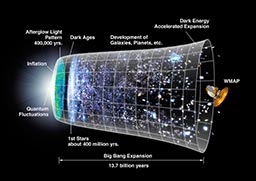
The discovery of the cosmic microwave background radiation (CMB) by Penzias and Wilson has proven that the universe was once a melting pot of high energy reactions at its early stage, and since then it has been cooling as it expands. Valuable information on physical processes taking place in the expanding universe has been recorded in the CMB as tiny anisotropies. Angular power spectra of the anisotropies, recently observed by the Cosmic Background Explorer (COBE) and the Wilkinson Microwave Anisotropy Probe (WMAP), are, roughly speaking, projection of the history for the period between its birth to the present. It gives us a amazing hope that if we believe the idea of inflationary universe describing a extremely rapid expansion without global thermalization, the long-distance correlation in observed anisotropies can provide the information about dynamics of the period before the universe grew to the Planck scale. We are now on the stage of revealing and verifying the quantum aspect of universe.
After passing many theoretical as well as experimental tests, the general theory of relativity has been established as the fundamental theory of gravity capable of describing the evolution of universe. Many questions in the mysteries of universe have arose expecting that the theory can give answers, such as, how the universe is created, why it is expanding, how it will evolve in the future, and so on. In order to answer these questions, we need to know the initial condition of the universe that would be set at the Planck time. However, it is the period when quantum mechanics rules the law of universe, and it is beyond the power of the classical general relativity. If we wish to apply the Einstein theory for the Planck scale phenomena, it has fatal difficulties, such as the black hole singularity and divergences in the canonical quantization procedure. Existence of these problems makes us wonder whether the Planck scale is the upper limit of the energy beyond which nature cannot be described in terms of physical laws. It is our ultimate task to construct the quantum theory which breaks the wall of Planck scale and creates a new frontier.
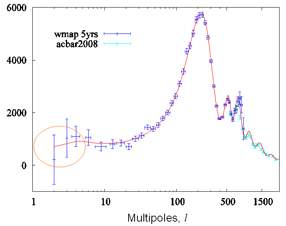
Renormalizable quantum theory of gravity developed on the basis of the conformal gravity in four dimensions provides an evolutional scenario of the universe which starts from quantum states with conformal invariance, passing through the inflationary era, and then makes transition to the conventional Einstein space-time without adding any artificial field by hands. In this theory the metric tensor field is written as a product of the conformal factor and the traceless tensor, and the conformal mode is treated non-perturbatively while the traceless tensor field is handled as a perturbation. The renormalized coupling of the traceless tensor mode indicates the asymptotic freedom. It implies that at very high energies beyond the Planck mass scale, quantum fluctuations of the conformal mode are dominated as a consequence of the background-metric independence, and spacetime is nonsingular. This nature is called "asymptotic background freedom'' to distinguish from the normal asymptotic freedom. The power-law spectrum obtained from the two point correlation function of scalar curvature shows a significant character of the conformally invariant field theory which is expected to be observed cosmologically.
The asymptotic background freedom also implies that there exists a dynamical scale where the effective coupling of traceless tensor mode diverges, and the conformal symmetry loses its validity. About this point the universe is expected to make a transition from the quantum spacetime to the classical Einstein spacetime, and fluctuations of the conformal mode would be frozen to the classical background. Such a dynamical scale is given by the order of 10^17GeV below the Planck scale. The sharp fall off of the angular power spectra at low multipole components of anisotropies in the CMB is expected to be an appearance of dynamical scale. [Research papers on quantum gravity cosmology]
The Einstein theory defined by the Ricci scalar is known to be not renormalizable, but it does not implies that diffeomorphism invariance conflicts with renormalization theory. Renormalizable quantum gravity presented here is defined by the following action determined by imposing the conditions of diffeomorphism invariance and Wess-Zumino integrability [Research papers on renormalization in quantum gravity] :

The first term is the Weyl action and "t" is the dimensionless coupling constant with negative beta function, which controls dynamics of the traceless tensor field. On the other hand, the conformal factor in the metric field is treated non-perturbatively without introducing its own coupling constant. The path integral over the metric field is described as

Here, S is the Wess-Zumino action for conformal anomalies induced from the path integral measure. It is a Jacobian required to preserve diffeomorphism invariance when rewriting the path integral using the practical measure defined on the background metric. Especially, the action S that appears at the ultraviolet (UV) fixed point of t=0 is called the Riegert-Wess-Zumino action, which is given by

At the UV fixed point, the theory is described as a special conformal field theory (CFT). Exact conformal symmetry comes out as part of quantum diffeomorphism invariance, realized by taking the sum over all possible conformally flat configurations. The background-metric independence is then represented as a gauge equivalency under conformal transformations, called BRST conformal symmetry. This is nothing but a realization of the ``asymptotic safety" program proposed by S. Weinberg in 1970s, as a condition for quantum gravity to be well-defined. [Research papers on physical states and conformal field theory] The BRST CFT represents a strong coupling phase in which gravity is fully fluctuating. On the other hand, the coupling t, which measures a degree of devitation from the CFT, describes another strong couping phase. With the increase of it, spacetime will make a transition from quantum gravity phase to classical Einstein phase, as mentioned above.
The inverse of the dynamical energy scale mentioned above gives the correlation length of quantum gravity. If shorter than this length, we cannot measure the distance, which is due to the background-metric independence where the concept of time and space is lost. Thus, it represents the minimal length of space-time we can measure physically. In this sense, space-time is practically quantized by this length unit without descretizing it. The energy of excitations in quantum gravity would be then given by the dynamical scale. If there is a stable excitation, it becomes a candidate for dark matter.
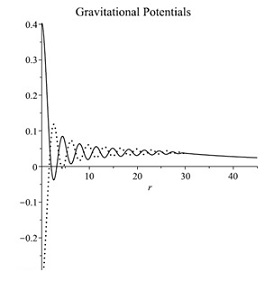
Point-like particles with mass greater than the Planck mass become black holes within Einstein's theory of gravity. This is because information of such particles is hidden inside their own horizon and lost. On the other hand, in the asymptotically background-free quantum gravity, there is a localized excited state with a mass exceeding the Planck mass. Its diameter is given by the correlation length, which is two orders of magnitude larger than the Planck length. The figure on the right shows a solution of the excited state with twice the Planck mass, in which the solid and dotted lines are two independent gravitational potentials. The Planck length is normalized to be 1 here. The outside (r> 30) is represented by the Schwarzschild solution, and the inside has a structure without singularities in which quantum effects of gravity are activated and spacetime fluctuates greatly. This purely gravitational excited state, in which the horizon disappears due to the quantum effect and is nothing but a particle when viewed from the outside, is called a dark particle. Considering the quantum effect of gravity in this way, the problem of Einstein's theory of gravity can be solved. [K. Hamada, Phys. Rev. D102 (2020) 026024, arXiv:2005.06743]
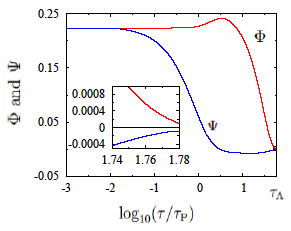
Quantum gravity inflation suggests that the universe expanded about 10^30 times during the inflationary era, and further 10^29 times after the transition to the Friedmann spacetime, about 10^59 times in total. That means that the size of hundreds of Megaparsecs, larger than the current cluster of galaxies, was within the Planck length before inflation. The figure on the left is the result of deriving evolution equations for gravitational fluctuations (gravitational potentials) from the effective action of the above quantum gravity theory and solving them around the inflation solution. Numerical calculation is performed from before the Planck time to the time when the spacetime phase transition (big bang) occurs, where the horizontal axis is physical time. It is shown that the amplitude of the fluctuations, which was initially large, becomes smaller during the inflation period and approaches the observed value of 10^-5 at the time of the phase transition (far right in the figure). In this way, quantum gravity inflation can explain the smallness of primordial fluctuations dynamically, not by fine-tuning. Information of this fluctuations is not disturbed in the process of the phase transition because its wavelength is greatly extended during the inflation period and grows to a scale sufficiently larger than the correlation length of quantum gravity. Therefore, information of scale-invariant spectra before inflation is transferred to the thermal universe after the spacetime phase transition as it is, and it is inherited in the CMB temperature fluctuation spectra and can be observed today. [K. Hamada, S. Horata and T. Yukawa, Phys. Rev. D81 (2010) 083533, arXiv:0908.0192]
The cosmological constant is never denied from diffeomorphism invariance. Rather, it is more natural to exist. Indeed, it was discovered at the end of the last century by experiments led by Permutter, Riess and Schmidt. The problem with the cosmological constant is not its existence, but that the calculated quantum correction by zero-point energy is 120 orders of magnitude larger than the observed value. At that time, the calculation is usually performed by introducing an ultraviolet cutoff into the Planck scale. On the other hand, a constraint that the whole Hamiltonian derived from diffeomorphism invariance vanishes indicates that zero-point energy vanishes. Where does this contradiction come from? This is because the UV cutoff is a computational method that breaks the diffeomorphism invariance. Conversely speaking, the problem of the cosmological constant does not arise if it is calculated by a diffeomorphism invariant method. In this way, the root cause of the cosmological constant problem is that the world beyond the Planck scale had not been described correctly. The asymptotic background-free quantum gravity theory is truly a renormalizable quantum field theory in which the Hamiltonian constraint exactly holds as the background freedom, and the cosmological constant problem does not occur. [K. Hamada, arXiv:2204.03914]

![]() "Trans-Planckian Physics and Inflation: An Introduction of Renormalizable and Background-Free Quantum Gravity"
By Ken-ji Hamada (Fundamental Theories of Physics vol. 223, Springer Nature, 2025)
"Trans-Planckian Physics and Inflation: An Introduction of Renormalizable and Background-Free Quantum Gravity"
By Ken-ji Hamada (Fundamental Theories of Physics vol. 223, Springer Nature, 2025)
| Preface | ||
| Contents | ||
| Chapter 1 | What Quantum Gravity Should Reveal | |
| Chapter 2 | Renormalizable and Background-Free Quantum Gravity | |
| Chapter 3 | Conformal Invariance as Background Freedom | |
| Chapter 4 | Physical Meaning of Hamiltonian/Momentum Constraints | |
| Chapter 5 | Renormalization Using Dimensional Regularization | |
| Chapter 6 | BRST Conformal Algebra and Physical States | |
| Chapter 7 | Quantum Gravity Inflation | |
| Chapter 8 | Localized Massive Excitations of Quantum Gravity | |
| Chapter 9 | What the Cosmological Constant Problem Is | |
| Chapter 10 | Amplitude Reduction of Spacetime Fluctuations and Primordial Spectra | |
| Chapter 11 | Topology and Quantum Gravity | |
| Chapter 12 | Simplicial Quantum Gravity | |
| Finale | ||
| Appendix | A, B, C, D | |
| References |
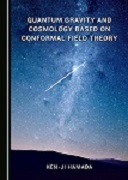
| Table of Contents | ||
| Chapter 1 | Introduction | |
| Chapter 2 | Conformal Field Theory in Minkowski Space | |
| Chapter 3 | Conformal Field Theory in Euclidean Space | |
| Chapter 4 | Basis of Two-Dimensional Conformal Field Theory | |
| Chapter 5 | Conformal Anomaly and Wess-Zumino Action | |
| Chapter 6 | Two-Dimensional Quantum Gravity | |
| Chapter 7 | Background-Free Quantum Gravity | |
| Chapter 8 | Physical States of Quantum Gravity | |
| Chapter 9 | Gravitational Counterterms and Conformal Anomalies | |
| Chapter 10 | Renormalization in Quantum Gravity | |
| Chapter 11 | The Universe in Einstein Gravity | |
| Chapter 12 | Quantum Gravity Cosmology | |
| Chapter 13 | Cosmological Perturbation Theory | |
| Chapter 14 | From Quantum Gravity to CMB | |
| Appendix | A, B, C, D, E | |
| Bibliography |
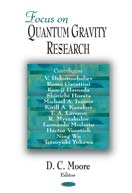
| Contents | ||
| Section 1 | Introduction | |
| Section 2 | Renormalizable Quantum Gravity | |
| 2.1 Brief Summary of The Model | ||
| 2.2 Conformal Invariance and Physical States | ||
| 2.3 Renormalization | ||
| Section 3 | Numerical Quantum Gravity | |
| Section 4 | Cosmology | |
| Section 5 | Conclusion |
 Monograph
MonographMany people believe that there is no world shorter than the Planck length, or that the world is governed by a physical law different from diffeomorphism invariance. Putting a cutoff in the Planck length and thinking of it as an entity of quantized sapcetime shows that. Why do you think so? What is the problem? Essential problems such as singularity, renormalizablity, unitarity, origin of primordial fluctuations, time, and so on ultimately come down to the problem of how to describe the trans-Planckian world as a continuum quantum field theory. The main purpose of this article is to solve these problems and present a way to describe the other side of the Planck scale wall.
Renormalization in Quantum Gravity
Quantum Diffeomorphism, Physical States and Conformal Field Theory
Two Dimensional Quantum Gravity
Others
Publication list by INSPIRE